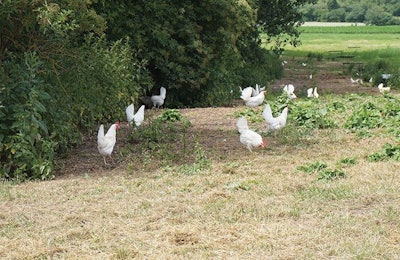
Broilers and layers raised in organic and free-range environments had an increased prevalence of Campylobacter and other pathogens after high winds occurred, according to research published in the journal Animals.
“We saw that most of the farms and flocks were infected with Campylobacter,” said co-lead author Olivia Smith, a Washington State University Ph.D. graduate in the School of Biological Sciences.
“A lot of these flocks are carrying bacteria even if they look like they’re not. It’s important to be aware of the context of the risk if it’s windy or if you’re an a really agricultural area.”
In recent years, retailers and consumers have advocated for the use of free-range and pasture-raised poultry products, however current commercial practices and economics, as well as worries about predators and weather, make the transition challenging.
Campylobacter risk with outside access
Over a three-year period, the researchers tested the chicken feces at 27 broiler and layer farms in California, Oregon, Washington and Idaho for the presence of pathogens.
Fewer than half (11) of the poultry farmers are certified organic producers, however all of the farms surveyed reported that they avoided the use of chemicals, including antibiotics, vaccines and medications that kill parasites.
They found that Campylobacter was present in 69.4% of the flocks tested. The incidence of Campylobacter was higher if high winds occurred a week prior to sampling.
Campylobacter is the cause of one of the leading foodborne illnesses worldwide and is responsible for 1.5 million illnesses in the U.S. each year, the Center for Disease Control and Prevention (CDC) estimates. Approximately four out of every five instances of Campylobacter in people results from handling and eating contaminated chicken meat.
Farmers raising chickens with outside access can reduce Campylobacter exposure by installing windbreaks or by bringing chickens inside during periods of high winds, the researchers said.
“One of the bigger takeaways is that there are foodborne pathogens everywhere. We may think that it’s safer if we’re growing in pastures, but there’s still a lot of bacteria on those farms,” Smith explained.


















